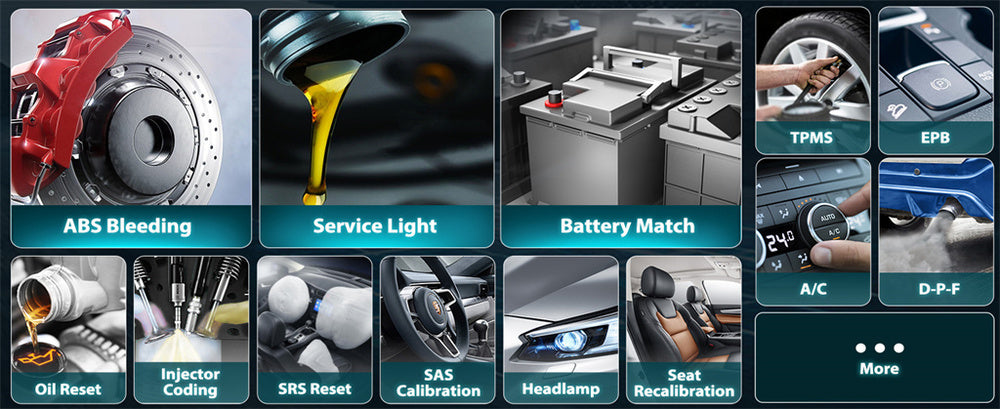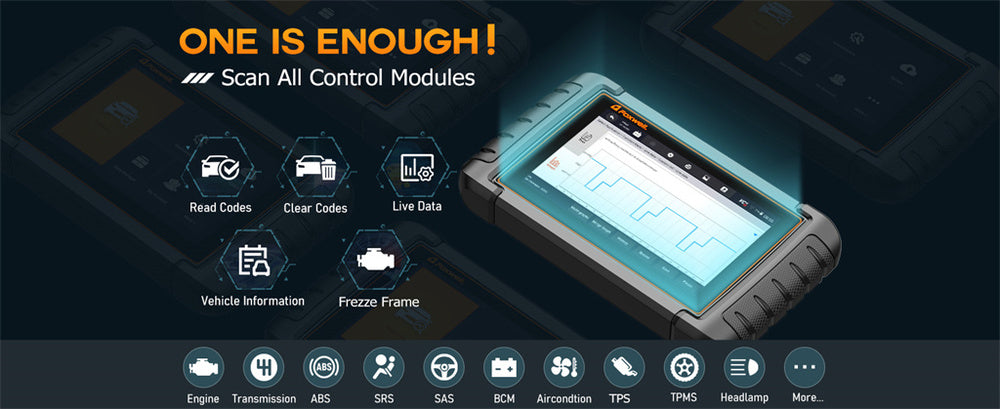Modern vehicles are marvels of engineering, blending mechanical brilliance with superior electronics. At the coronary heart of this state-of-the-art device lies the
Engine Control Module (ECM)—the digital mind that keeps your engine walking quickly. But what takes place when this vital issue begins to falter? A malfunctioning ECM can disrupt your vehicle’s performance, leading to highly-priced repairs and safety concerns.
This guide will discover the signs and symptoms of ECM failure, the motives behind it, and how to diagnose and resolve the problem correctly. Tools like the Foxwell NT809BT can simplify this technique in precise situations, ensuring accurate diagnostics when it matters most.
What Is the ECM, and Why Is It Important?

The ECM is essentially the nerve middle of your automobile’s engine gadget. It collects records from sensors, techniques them, and sends instructions to control fuel injection, ignition timing, and emissions control. Without it, your automobile’s performance could be chaotic at satisfactory—or non-functional at worst.
The ECM malfunctions can lead to erratic engine conduct, gasoline inefficiency, or even a complete breakdown. Early prognosis is crucial to avoid similar headaches.
Five Key Symptoms of a Failing ECM
The Check Engine Light Stays On
The “Check Engine” light is often the primary warning sign. While this light may be induced by many troubles, a persistent glow that doesn’t resolve after routine maintenance could possibly indicate a failing ECM.
Diagnostic Tip: Using gear like the Foxwell NT809BT, you may retrieve fault codes associated with ECM malfunctions, including P0600-P0606, which signal internal module issues.
Erratic Engine Performance
When the ECM struggles to manner sensor facts or send accurate instructions, you may notice:
- Difficulty beginning: Especially in bloodless situations or after extended intervals of inactivity.
- Rough idling: The engine feels unstable, with uneven vibrations.
- Acceleration troubles: Delayed or weak throttle response.
These symptoms regularly stem from disrupted conversations between the ECM and different engine additives. Proper diagnostics can help determine whether the hassle lies in the ECM or its associated structures.
Unexpected Changes in Fuel Efficiency
An ECM failure can disrupt the ideal air-fuel aggregate balance required for efficient combustion. As a result, your vehicle may also burn more fuel than necessary, increasing costs and emissions.
Regularly maintaining and monitoring gas intake tendencies can help trap those adjustments early.
The Car Fails to Start
The ECM can be the issue if your car refuses to begin despite a healthy battery and starter. It may fail to send the essential indicators to the ignition machine or fuel pump.
In such cases, comprehensive diagnostic equipment is critical to pinpoint the root motive.
Communication Errors with Diagnostic Tools
A less apparent symptom is when diagnostic equipment fails to connect with the car’s ECM. This regularly shows extreme hardware or software program corruption inside the module.
Why Do ECMs Fail?
Understanding why ECMs fail can help you take preventive measures. Common causes encompass:
- Electrical Surges: Voltage spikes or risky strength from a weak battery can harm sensitive ECM circuits.
- Environmental Factors: Moisture intrusion, extreme temperatures, or prolonged vibrations can weaken the ECM’s inner structure.
- Software Corruption: Failed updates or corrupted firmware can render the module unresponsive.
- Wear and Tear: Over time, even the most robust components can degrade, which is the leading cause of ECM failure.
How to Address ECM Problems
Step 1: Perform a Basic Diagnostic
Start by scanning your vehicle for fault codes and reading stay sensor information. Tools like the Foxwell NT809BT are worthwhile here, providing real-time records streaming and superior device checks. They help you determine whether the ECM or every other element is at fault.
Step 2: Consult a Technician
If diagnostics suggest ECM failure, seek advice from a certified mechanic. They can determine whether the module can be reprogrammed or needs replacing. A proper diagnostic document expedites this method and decreases the hazard of misdiagnosis.
Step three: Replace or Reprogram the ECM
When replacing an ECM, ensure it’s compatible with your automobile’s model and specs. A technician can use advanced tools to recalibrate the module for seamless operation.
Preventing ECM Failures
Protect Your Electrical System- Ensure your automobile’s battery and alternator function correctly to avoid electricity surges.
- Regularly investigate seals and enclosures to save moisture or particles from entering the module.
- Periodic device scans can capture small issues before they amplify. This preventive step is key to keeping the ECM’s toughness.
- Faulty sensors can overload the ECM, so specific components like oxygen and throttle role sensors are in the exact situation.
Conclusion
Your ECM is the spine of your car’s engine management system. Recognizing the caution symptoms early and addressing them directly can prevent unexpected breakdowns and high-priced maintenance. Whether it’s a continual Check Engine mild or unexplained gasoline inefficiency, taking proactive steps is crucial for automobile health.
Diagnostic equipment like the Foxwell NT809BT can make figuring out ECM problems less difficult and more accurate, ensuring that you stay on top of your vehicle’s overall performance. With the right method, you can avoid the most important disruptions and keep your car running smoothly.
FAQs
How do I know if my ECU has failed?
Signs include the Check Engine light staying on, poor engine performance, difficulty starting, or irregular idling. A diagnostic scan can confirm the issue.
What is the most common failure of an ECM?
The most common failures include electrical issues, software corruption, and damage from environmental factors like moisture or extreme temperatures.
How do I know my car computer system is failing?
If your car shows warning lights, erratic engine behavior, or fails to start, it may indicate a failing car computer system. Using a diagnostic tool can help identify the problem.




Leave a comment
This site is protected by hCaptcha and the hCaptcha Privacy Policy and Terms of Service apply.